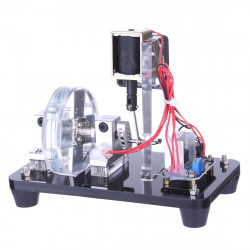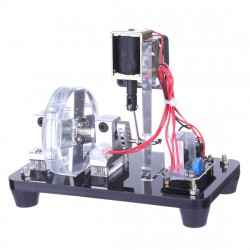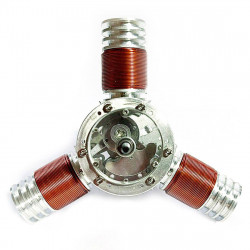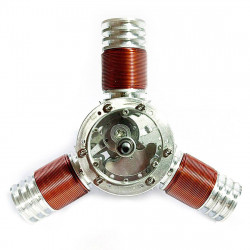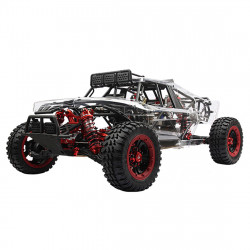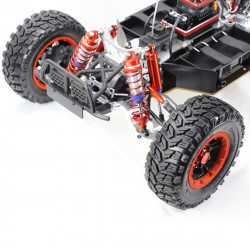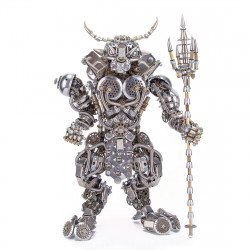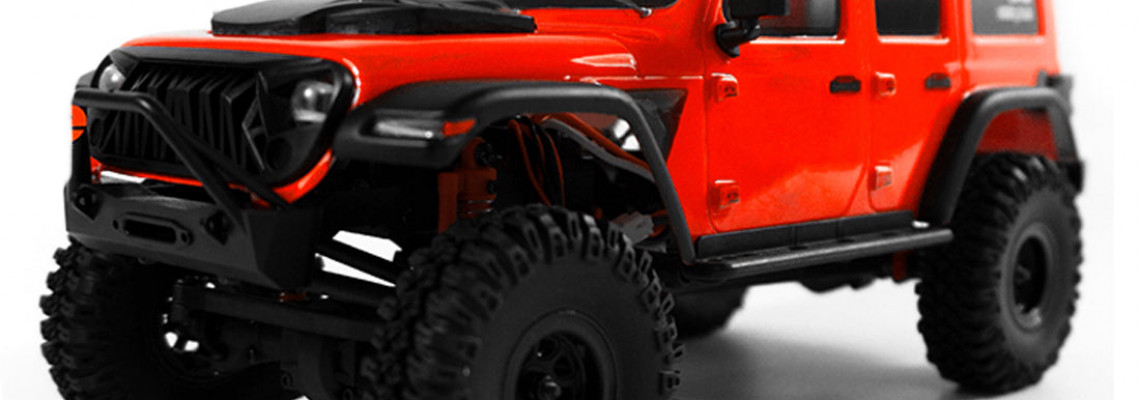
Pushing the Limits: Adding FPV Cameras to Your RC Car
Are you prepared to climb into your RC car's cockpit? Yes, exactly!
Here, we're discussing First-Person View (FPV) cameras. With this thrilling device, your RC car becomes an entirely immersive, high-octane experience. We've secured your VIP pass to the world of FPV RC racing, so it's time to transition from spectator to driver. This is going to be crazy, so buckle up!
The Magic of FPV in RC Cars
Imagine this:
You're a little person, approximately the size of an ant, strapped into your remote-controlled car, racing past obstacles at high speeds, experiencing an adrenaline rush that will make your head spin. Sounds crazy.
This is precisely what FPV (First-Person View) in RC cars provides, so it's time to embrace the crazy.
FPV technology puts you directly in control of your RC car by giving you a live video from the cockpit. This remote control arrangement isn't your typical one. No, sir! With FPV, you're living the RC car rather than just controlling it. You feel the excitement as though you're actually there, taking part in every twist, turn, jump, and flip.
The magic of FPV has completely changed the way we interact with RC cars. Nowadays, it's more than just driving a car from a distance. Immersion and firsthand experience of the race's excitement are key. So, everyone, fasten your seatbelts. A crazy, heart-pounding adventure unlike any other awaits you with FPV!
Crazy? Perhaps.
Exciting? Of course!
Choosing the Right FPV Camera for Your RC Car
Not every FPV camera is made equally. Choosing the appropriate option is just as crucial as selecting your RC car, and there are many options available. Consider durability, size, latency, and image quality. Do not be alarmed! We are here to assist you in navigating the confusing array of choices and locating the ideal camera that complements your vehicle and your personal preferences.
Image Quality
The quality of its images is what makes an FPV camera what it is. Seek out cameras with a high resolution, which is typically expressed as pixels or TVL. Also, consider the camera's ability to handle light.
Can it easily transition between various light conditions? Wide dynamic range (WDR) cameras are much better at handling changes from bright to dark areas.
Latency
Every millisecond matters in FPV. The amount of time that passes between an image being taken by the camera and appearing on your screen is known as latency. You don't want a delayed video feed when you're speeding around hazards, so look for cameras with minimal latency.
Size and Weight
The term "formats" refers to the different sizes of FPV cameras. The most widely used ones are standard, mini, micro, and nano. Please select a size that will fit your remote-controlled car without compromising its functionality. Recall that more speed can be achieved with a lighter vehicle!
Durability
The camera will be beaten up, just like RC cars. Seek out cameras with protective shells and robust construction. A camera with a changeable lens might be something to consider in case something goes wrong.
Field of View (FOV)
The camera's field of view is this wide. Although it can distort the image at the corners, a broader field of view offers a more immersive experience—a more focused view results from a restricted field of view. The kind of track you'll be racing on and your driving style should guide your decision.
If you consider these factors, you'll be well on your way to selecting the ideal FPV camera for your remote-controlled car. Remember that the objective is to improve your driving experience, so do what you feel is best!
Installing Your FPV Camera
Now that you've discovered the ideal FPV camera, it's time to put it on your remote-controlled car and bring it home. Even though it may seem daunting, if you follow our simple instructions, you can get it up and running faster than your RC car on a straight track.
Step 1: Gather Your Tools: Depending on the model of your RC car and camera, you may need a pair of pliers, zip ties, double-sided tape, a tiny screwdriver set, and possibly a small drill. Before beginning, ensure that everything is prepared.
Step 2: Choose the Mounting Location: The location is crucial. Your camera should be mounted such that you can see clearly without being too close to collisions. Popular options include the hood or the front bumper. Keep in mind that a higher camera allows you to see more, but it also makes it more vulnerable to damage.
Step 3: Secure the Camera: The camera and your RC car model will determine how to secure the camera. While some cars come with slots designed explicitly for FPV cameras, others could need some do-it-yourself effort. Make sure the camera is securely mounted on the RC car using the included mount.
Step 4: Connect the camera to the transmitter: Now attach the video transmitter (VTX) to your camera. This usually entails attaching the video cable (yellow) and the power cords (black for negative, red for positive). Ensure that the connections are safe.
Step 5: Power Test: It's a good idea to perform a brief power test prior to securing everything in place. After plugging in the battery, switch on your FPV goggles or monitor and RC car. The camera should give you a clear image. Recheck your connections if not.
Step 6: Tidy Up: After everything is operational, use tape or zip ties to neaten up the wire. Make sure that none of the cables can obstruct the RC car's movement components.
Step 7: Go for a Test Drive: The moment of truth has finally arrived. To make sure everything is operating as it should, take a quick test drive.
Keep in mind that mounting your FPV camera requires a lot of excitement, a little patience, and a little imagination, just like any other RC task. If you encounter any problems, don't give up! The majority of issues can be resolved with a single troubleshooting step. You will quickly be immersed in the immersive world of FPV if you have this guide close at hand.
Mastering the FPV Driving Experience
Now that your FPV camera has been set up, it's time to get started. But let's face it: operating FPV is an entirely different animal. It is comparable to stepping into the driver's seat after playing a video game about vehicle racing. Your perceptions change, your feelings change, and your views change. Don't worry, though; with a bit of practice, you'll be navigating those tight turns and challenging racetracks with ease.
Step into a New Perspective: You may be surprised the first time you put on those FPV goggles and start your RC car. The car is now you, not the other way around. At first, this shift of viewpoint may be confusing but persevere. To obtain a sense of the new perspective, start with leisurely, straightforward drives.
Practice Makes Perfect: Practice is essential for every new talent. Take the opportunity to try out various driving styles and discover how your vehicle reacts to your inputs from an FPV standpoint. Until you have confidence, set up a practice course and begin at lesser speeds.
Get a Grip on Orientation: Knowing your car's orientation is essential while using FPV. To gain a sense of how to judge distances and handle maneuvers from the camera's point of view, practice navigating around obstructions.
Safety is King: Furthermore, even though FPV driving is an exciting experience, safety should always come first. Make sure your driving space is always free of people, pets, and expensive items. Remember that you are unaware of your surroundings when wearing the goggles.
Finally, enjoy yourself!
Indeed, FPV can be tricky at first, but that's just a part of the process. It's all worth it to experience the excitement of viewing the world through the eyes of your remote-controlled car, making that challenging turn, or navigating that tight space. Prepare for the ride of a lifetime by fastening your seatbelt and holding on tight. Greetings from the FPV driving world!
Exploring the Future of FPV and RC Cars
We're just getting started, so if you thought FPV in RC cars was revolutionary, get ready. With the speed at which technology is developing, the future appears more promising than the headlights on your fully charged remote-controlled automobile.
Consider tracks for Augmented Reality (AR). Imagine wearing your FPV goggles and seeing an interactive, fully rendered racetrack in addition to the live video from your remote-controlled vehicle. Imagine blazing hoops, simulated loops, and challenging terrain. From the convenience of your backyard!
What about rivals that are holographic?
AI-powered remote-controlled vehicles that can communicate with your car in real-time. Imagine holding your own Grand Prix on the floor of your living room, replete with a field of foreign rivals.
Why stop there, though?
What about haptic feedback controls that allow you to feel the terrain your vehicle is driving over? Or real-time 3D mapping that lets your remote-controlled car comprehend and navigate its surroundings on its own?
Let's face it: The options are as limitless as a desert straightway. Thanks to FPV technology, RC driving has changed from a spectator sport to a fully immersive experience. Furthermore, the distinction between simulation and reality will become increasingly hazy as technology advances.
There is little doubt that FPV and RC cars will have an exciting, pulse-pounding future. Furthermore, we are eager to discover what lies ahead. The best is still to come, so keep your eyes open, your batteries charged, and your goggles clear!
Conclusion: Embracing the FPV Revolution
Are you prepared to enter the RC racing of the future? The FPV world is just waiting for you to jump in. Keep in mind that pushing the boundaries is a way of life in RC racing, not just a choice.
Do you want to drive in real time using FPV? Please view our selection of V8engineforsale cars, which are entirely compatible with FPV cameras. Get a better ride right now!
My friends, keep the pedal to the metal!
